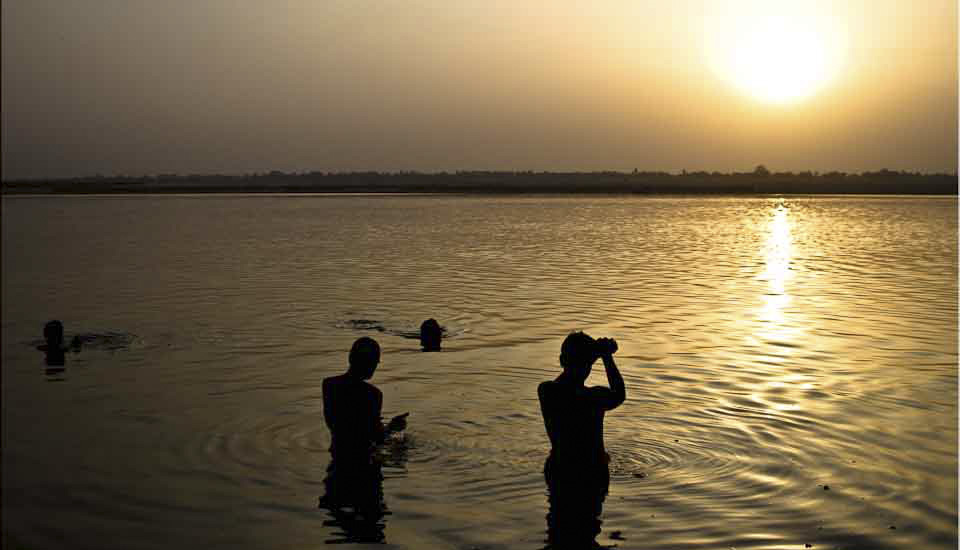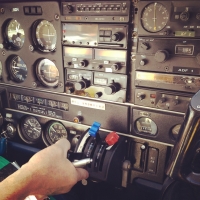.jpg)
Long Logs – Tall Trunks
Slowly, the mighty evergreen trees rise to the sky. Slowly, the poles from the abandoned longhouses are reclaimed by the earth. Western red cedars (Thuja plicata) are central to the physical and spiritual lives of the Haida people.
(Click to start Cedar Sister by Terri-Lynn Williams-Davidson.)
In the Haida worldview, the cedar tree is known as “every woman’s sister”, providing for and sustaining our existence. This ancient sister lies at the root of Haida culture. She permeates every facet of Haida life, beginning in the cradle and continuing to the grave and finally, ending at the memorial potlatch and raising of memorial totem poles to commemorate and celebrate one’s life and contributions to the community.
– Terri-Lynn Williams-Davidson
Haida Gwaii, an archipelago in the northern Pacific waters of BC, Canada, is a stunningly beautiful place.
The people who have been part of these islands for at least 13,000 years are intimately connected with the land, the magnificent tall trees, the pristine coastal waters, and the animals who live here.
Nowhere is this interconnection more apparent than in the abandoned Haida villages of Ḵ’uuna Llnagaay, Grizzly Bear Village, (also known as Skedans) on Louise Island and T’aanuu Llnaagaay (Tanu), meaning Eel Grass Village, on on Tanu Island. The fallen poles that were once carved memorials or houseposts lay covered in moss, slowly decaying back to the earth, sustaining the next generation of tall, stately trees. There is a sacred stillness in this forest, with stones, worn totems, and moss-covered house-pits standing as a silent memorial to those who once lived here.
The Haida call decaying cedar stumps ‘nursery trees’; they give life to the next generation.
Haida Gwaii is the heartland of the Haida Nation. Linguistically distinct from other First Nations peoples, the Haida developed a complex class and rank system consisting of two main clans: the Raven and the Eagle. The fertility of their landscape and abundance in the waterways allowed them to foster their artistic skills, and their artwork is highly valued today.
Before the arrival of Europeans, there were more than 100 villages scattered around the archipelago. Ḵ’uuna Llnagaay and T’aanuu Llnaagaay each had between 25 to 40 extended families, with each housed in their own longhouse.
Europeans first sighted the archipelago in the late 1700s, and it became important to the maritime fur trade, and later, to gold prospectors. This lead to multiple waves of new illnesses: typhoid, measles, syphilis, and smallpox. It is estimated that ninety percent of Haida died as a result. The 1862 Pacific Northwest smallpox epidemic alone killed over seventy percent of the population.
With such a dramatic reduction in numbers, most villages – like Ḵ’uuna Llnagaay and T’aanuu Llnaagaay – were abandoned in the late 1800s. The few remaining people regrouped, leaving behind mortuary poles, mortuary houses, and the remains of the original longhouses.
These villages are now designated part of a National Historic Site of Canada and are administered by the Council of the Haida Nation and Parks Canada. They can only be visited with permission, and with Haida guides/escorts.
I wanted to take in as much of Haida Gwaii as I could (eg: Welcome to Haida Gwaii and Stories in the Rocks and Trees). But, I was travelling in shoulder season and Covid19 lockdowns had not long-since ended. Tour operations were not running a full calendar and I was only able to schedule one day-trip into the restricted and difficult-to-access regions of the Gwaii Haanas National Park Reserve during my stay.
That trip was a day to remember. Join me among the cedars and Sitka spruce.
.jpg)
Boats on the Daajing Giids Docks
It was a short walk from my accommodation in Queen Charlotte to the docks to meet my Haida Style vessel.
.jpg)
Boatman and Tour Leader
Local to Haida Gwaii, our boat operator James was a wealth of knowledge.

Young Haida Woman
Xiila is also a Haida native – albeit living on the mainland so she can study nursing at University. She was glad to be home for the summer, where ‘the air smells SO much better!’

A Rocky Outcrop
After almost two hours travelling south down the Hecate Strait in our 30-foot closed-cabin vessel, we slowed at a rocky island near Louisa Island.

A Sea Lion Colony
You hear and smell them before you see them! These are Steller sea lions (Eumetopias jubatus), a large, near-threatened species of eared seals (Otariidae).

Steller Sea Lions – Eumetopias Jubatus
These are the largest of the seals: bulls can weigh between 450–1,120 kg (990–2,470 lb). The paler females sharing his territory are much smaller and average around 263 kg (580 lb).

Black Guillemot – Cepphus Grylle

Eagle on the Wing
Bald eagles (Haliaeetus leucocephalus) are everywhere: watching from their perches high on the cliffs, and circling over the waters for prey.

Bear on the Shore
We slow down to watch a young American black bear (Ursus americanus) on the beach on Louisa Island – near where we are about to land.

Carving and the Watchhouse
We disembark our little vessel on Louisa Island where Grizzly Bear Village – Ḵ’uuna Llnagaay – once thrived, and stop in to pay our respects to the Watchmen. Once upon a time, Watchmen were symbolic: tall-hatted figures at the top of village poles, keeping the inhabitants safe. Since the 1980s, however, Haida Watchmen are actual people, who share cultural stories and protect the old villages from looting and vandalism.

Gidinjaad – Cousin DiDi
Eagle Woman and Watchman in K’uuna Village, Cousin DiDi, shares stories of her life and culture.

Rufous Hummingbird – Selasphorus Rufus
I love watching these delightful and feisty creatures. They are often represented in Northwest Coast – including Haida – jewellery and art as symbols of love and beauty.

Nature’s Artworks : Driftwood and Stones

Telling Stories
Xiila is the daughter of a current chief on Graham Island, and a descendant of the people who once lived in this village. She tells us historical stories, as well as myths her grandmother told to her.

Leaning Potlatch Pole
The tall cedar poles are left where they fall. The one at the back has carved rings, thought to depict how many potlatches the chief had hosted. Potlatches were important gift-giving feasts involving the giving away or destroying of precious goods to demonstrate a leader’s wealth and power.

Fallen Potlatch Pole
Potlatches took long preparation; they were usually held to celebrate special events. They included days of music, dancing, singing, storytelling, making speeches, and often joking and games. The supernatural was often invoked, and oral histories and regional alliances were reinforced. The practice was banned by the Canadian government between 1885 and 1951, but continued underground.

Totem Textures

Sitka Black-Tailed Deer – Odocoileus Hemionus Sitkensis
While it is lovely to spot wildlife, these destructive creatures were introduced between 1878 and 1925, by European settlers. In the absence of predators, their population boomed, leading to overgrazing and destruction of culturally important vegetation. Efforts to control their numbers continue – so far, with little effect.

Boats in Skedans Bay, Louisa Island

Sitka Spruce – Picea Sitchensis
Spiky spruce has hard, sharp needles, but the new growth is fresh and soft.

Our Boatman
After a wonderful lunch of salmon and salad, we set off again, motoring south, and pulling onto the beach at T’aanuu Llnaagaay. James helps us ashore.

Boat on Laskeek Bay

Village Map
At one time, there were between 25 to 40 longhouses in T’aanuu Llnagaay: around 1840, there were 545 recorded inhabitants.

Fallen Poles tell Stories of Ancient Haida Longhouses
Today, the remains of three house-pits are visible.

Rocky Foreshore
The village was in a beautiful location.

Stories in the Woods
Xiila leads the small group through the village, explaining the layout along the way.

Mossy Textures

Corrugations in the Moss
It’s hard to reconcile the atmospheric beauty of this place with its sad – but proud – history.

Haida Gwaii Museum, Skidegate
It’s a long – but quiet and thoughtful – trip back up the Hecate Strait, past Skidegate, and into dock at Daajing Giids.
 These places are a living memorial to a proud and creative people.
These places are a living memorial to a proud and creative people.
And, an illustration of the part the mighty cedar plays in the cycle of life.
Let us tread softly on this earth.
Photos: 12June2022



































.png)

